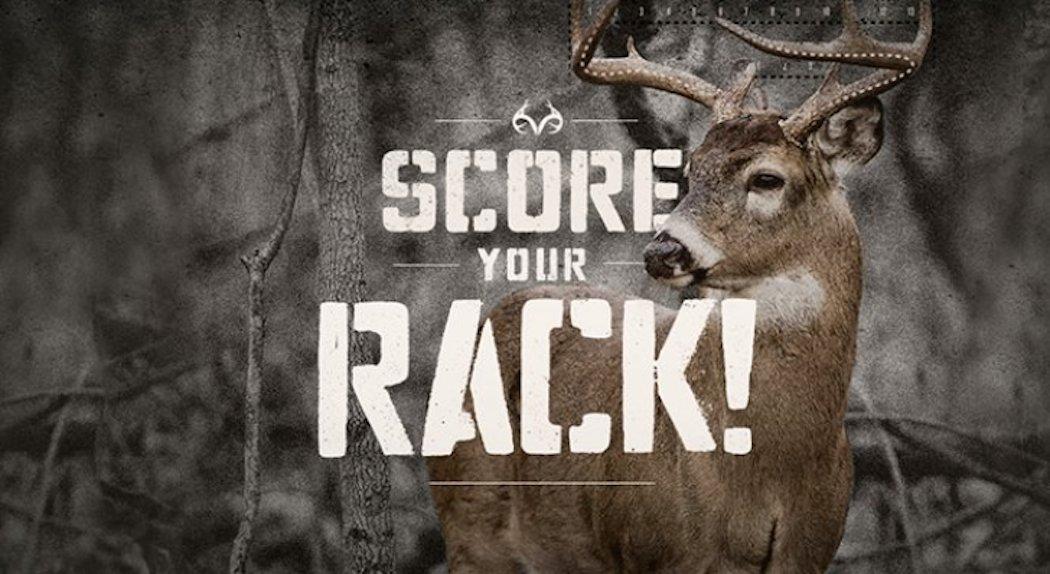Great Advice from a Great Source
It's important to remember that buck harvest restrictions are not synonymous with Quality Deer Management (QDM). Rather, they are a strategy to protect a specific age class (generally 1 1/2-year-olds) or age classes of bucks.
Antlered deer management is important because hunters like to shoot bucks, and in the past, hunters routinely overharvested the buck segment of populations. This provided much opportunity to experiment with buck harvest restrictions, and today QDM practitioners can choose from a myriad of strategies and tailor one to fit their situation. Many antler restrictions have been used including point, spread and beam-length requirements as well as Boone & Crockett (B&C) score. Additionally, age/body characteristics, buck quotas, earn-a-buck programs and combination approaches have been used to regulate buck harvest.
All restrictions have advantages and disadvantages. The key is to implement a strategy devised from local data and then garner support from the local sportsmen and women affected by it — whether a hunting club, a QDM cooperative or a larger area such as a WMA or county. This is often best accomplished by a strong educational campaign informing them about the strategy's costs and benefits.
Let's take a closer look at the various strategies for managing antlered bucks.
Antler Point Restrictions
Antler point restrictions (APRs) are a commonly used technique, and they involve establishing a minimum number of points a buck must have to be eligible for harvest. This minimum number should be established with the aid of a biologist and with local harvest data.
APRs are simple and easy to enforce, and this is one of their biggest advantages. The disadvantage of APRs is the number of antler points is a poor predictor of deer age. Yearling bucks can have racks ranging from short spikes to 10 or more points. Therefore it can be difficult with APRs to protect the majority of the yearling age class while still making other age classes available for harvest. Managers may unintentionally focus harvest pressure on yearlings with larger racks or protect older age classes with smaller racks. However, because APRs are simple for hunters to follow and easy to enforce, they are the most common buck harvest restriction discussed and implemented by state agencies. Of the 22 states that employed antler restrictions 10 years ago, 15 employed APRs, and depending on the state, the number varied from one to four points on a single antler.
Interactive Guide: Realtree's How to Age Bucks on the Hoof
Are you trying to manage for mature bucks? Wanting to learn how to age bucks on the hoof so you can make a more informed harvest decision this fall? Check out this interactive guide. It explains tips and tricks for determining what age class a given buck belongs to.
Go Here: How to Age Bucks on the Hoof
Antler Spread
Antler-spread restrictions involve establishing a minimum antler-spread width a buck must have to be eligible for harvest. Again, this width should be established with the aid of a biologist and from local harvest data.
The premise of a width restriction is few yearling bucks attain an outside antler spread of more than 15 to 16 inches. Hunters can estimate a buck's spread by viewing where the antlers are in relation to the buck's ears when extended. Ear tip-to-tip distance is approximately 15 to 16 inches for northern deer and slightly less for southern deer. Therefore, if a buck's antlers are as wide as or wider than his ears, there is a good chance he is at least 2 1/2 years old.
The advantage of a spread restriction is it is a much better predictor of whether a buck is 1 1/2 or 2 1/2 years old or older and therefore can do a better job of protecting yearlings. Disadvantages of a spread restriction include it is slightly more difficult to determine the legal status of a buck in the wild compared to APRs; it can be more difficult for state agencies to enforce, and some mature bucks can have tall, narrow racks that are less than 16 inches wide.
A spread restriction is more biologically sound than an APR and therefore is commonly used on private and leased lands where managers have more control over the program.
Boone & Crockett Score
A third technique is harvesting based on a buck's B&C score. An advantage of this is research shows gross B&C score is highly correlated with relative age in many areas. Therefore, this technique can be successfully used to separate yearling bucks from 2 1/2-year-old and older bucks. Disadvantages include it requires time and practice to become proficient at scoring a live buck in the wild. Since some young bucks have high-scoring antlers while some mature bucks have low-scoring antlers, this technique is less useful for separating 2 1/2-year-olds from 3 1/2-year-olds, or 3 1/2-year-olds from 4 1/2-year-olds, as there can be much overlap in antler scores of middle-aged and mature bucks. This technique is commonly used as part of a combination approach on private and/or leased lands, but is not employed by any state agency.
Body Characteristics
A fourth technique is harvesting by age restrictions based on body characteristics. This technique involves establishing the age classes available for harvest and hunters then use body characteristics — not antler characteristics — to determine eligible bucks. Distinguishable body changes occur as deer progress through age classes, and this technique requires hunters to be skilled in identifying those changes. Estimating the age of bucks on the hoof is not an exact science, but with practice, hunters can easily separate bucks into three groups: yearlings, 2 1/2-year-olds and 3 1/2-plus. The advantage of this technique is you can either target or protect multiple age classes of bucks. The disadvantage of this technique is it requires time and practice for hunters to learn the body characteristics of each age class specific to their region and habitat and be able to accurately estimate the age of local bucks. This technique is a lot of fun and rewarding for true whitetail enthusiasts. Age restrictions are the most biologically sound approach and are used in the majority of intensive management programs.
Buck Quotas and Earn-a-Buck
Two additional techniques are buck harvest quotas and earn-a-buck programs. Both of these programs restrict the number — not the age or antler size — of bucks that can be harvested. Buck harvest quotas are similar to what most states use to limit the antlerless harvest. With this technique, managers issue a limited number of buck tags, and thus some bucks are protected because not all hunters receive a tag. Buck quotas can be established on an area or hunter basis. For example, managers can allot a specific number of bucks for a wildlife management unit, county, property, etc., or limit the number of bucks an individual hunter can harvest. An advantage of this technique is it can prevent overharvest of bucks. Disadvantages are it can result in unhappy hunters if the quota is met early in the season, and it can still allow an overharvest of yearling bucks, especially in areas with high hunter numbers.
Earn-a-buck programs are typically used in areas of high deer density where managers must force hunters to remove additional antlerless deer. The premise of this technique is a hunter must harvest an antlerless deer to receive (or validate) his/her buck tag. A hunter that doesn't help the management program by harvesting a doe is not permitted to shoot a buck. This technique protects some bucks because not all hunters will have the opportunity to harvest a buck after harvesting an antlerless deer. Disadvantages are similar to those in buck quota programs. This technique was developed as a strategy for meeting antlerless harvest goals. It simply has a secondary benefit of protecting bucks.
Combination Approaches
As its name implies, this technique combines two or more of the above strategies to manage the buck harvest. For example, it could be a combination of a minimum number of antler points and a minimum spread, or a minimum B&C score and minimum age. It can also be an either/or approach such as requiring a buck to have a minimum number of points or a minimum spread. Finally, some managers use an a la carte approach where a buck must meet at least one harvest criteria:
- A gross score of 120 inches
- Be at least 3 1/2 years of age
- Have at least a 16-inch inside spread.
Combination approaches are generally more biologically sound, flexible and preferred to single restriction strategies.
Interactive Guide: Realtree's Score Your Rack
Do you want to score your deer? Not sure how to get that done? This guide will help you put the tape to your trophy and come out the other end with an accurate score.
Go Here: Score Your Rack
Which is Best?
From a biological standpoint, age restrictions are typically best because they are the most precise and flexible way to achieve management goals. From a practical standpoint, harvesting by age may not be possible initially due to varying skill levels among hunters. However, harvesting by age should be the eventual goal of nearly all QDM programs. Education and experience are the keys to success.
At the property, WMU, or state level there are many ways to protect numbers or specific age classes of bucks. No technique is perfect but they all have advantages.
Which strategy does the QDMA support? We examine each buck harvest restriction on a case-by-case basis and apply a three-part test. First, is the restriction biologically sound? Second, is it supported by a majority of affected hunters and landowners? Finally, will it be objectively monitored to determine success or failure? If the restriction meets these criteria, it stands a good chance for success. The challenge is to educate hunters on the benefits and limitations of each restriction and achieve broad-based support for the selected technique. Hunter support is crucial, and it can lead a management program to success, or doom it for failure. In general, the most biologically sound techniques provide the most benefits, but all of them can improve a deer management program when applied correctly.
Don't Miss: 7 Ways to Practice Quality Deer Management
Editor's Note: This was originally published on December 10, 2008.
Are you a deer hunter wanting to learn how to accomplish your goals? Check out our stories, videos and hard-hitting how-to's on deer hunting.









